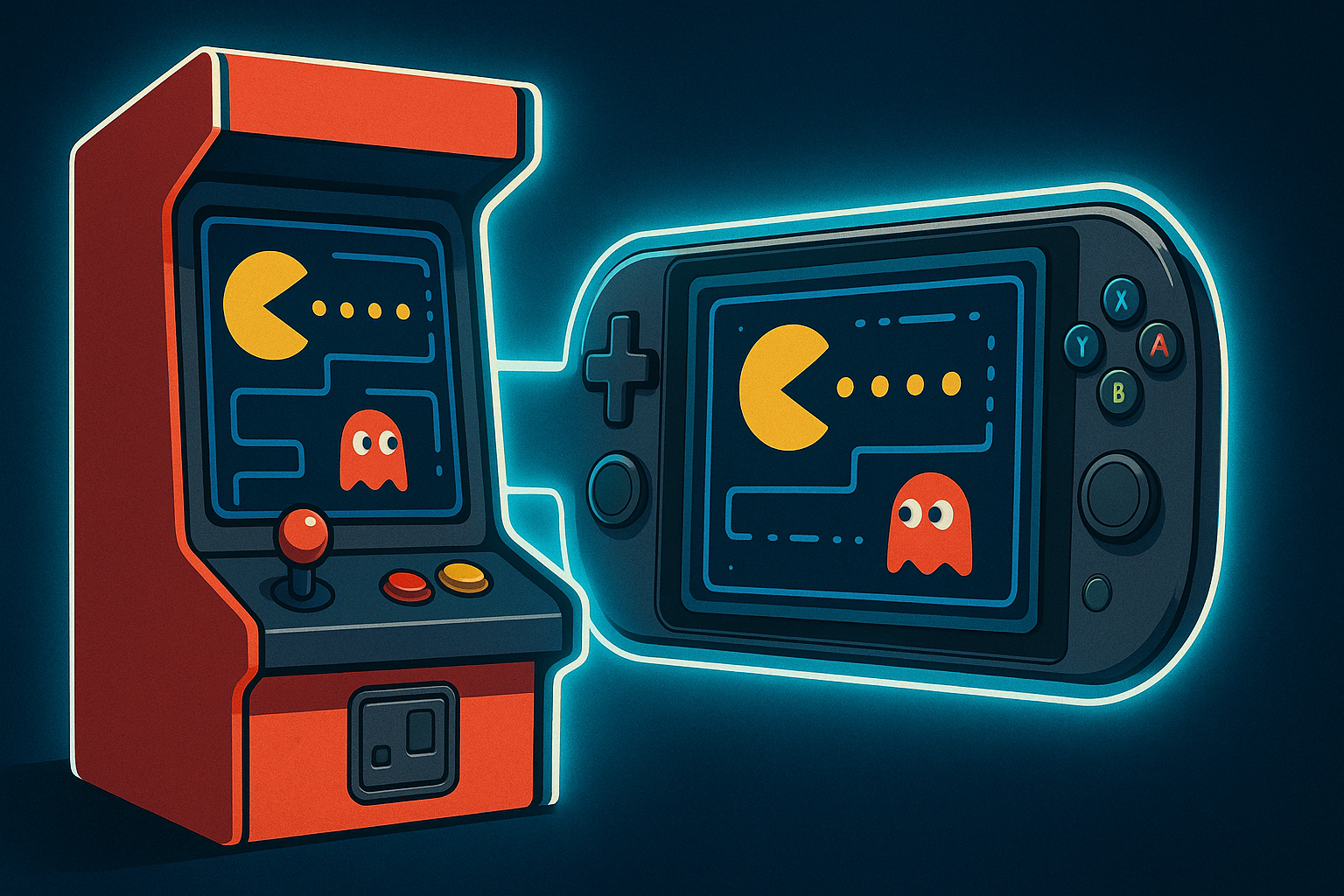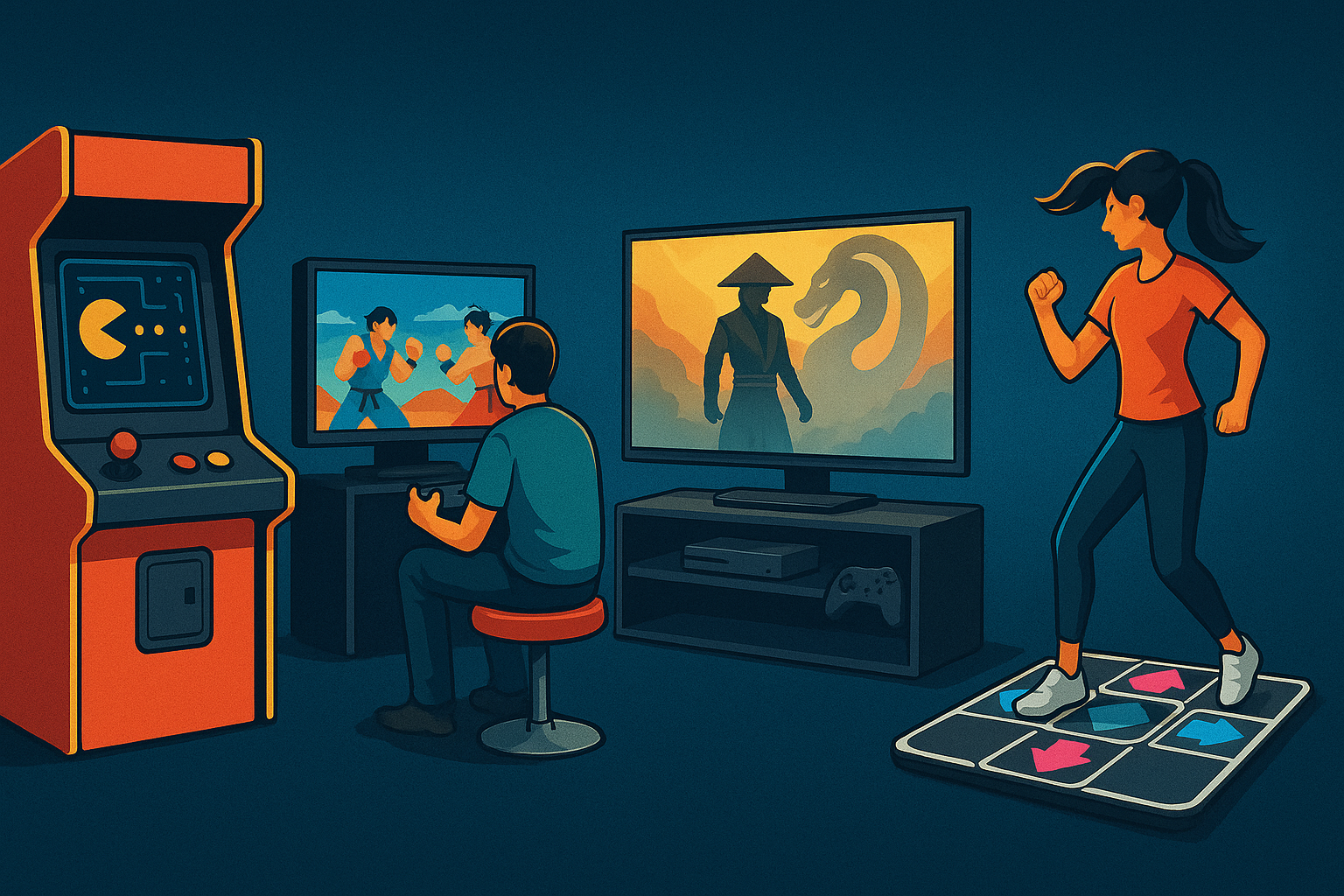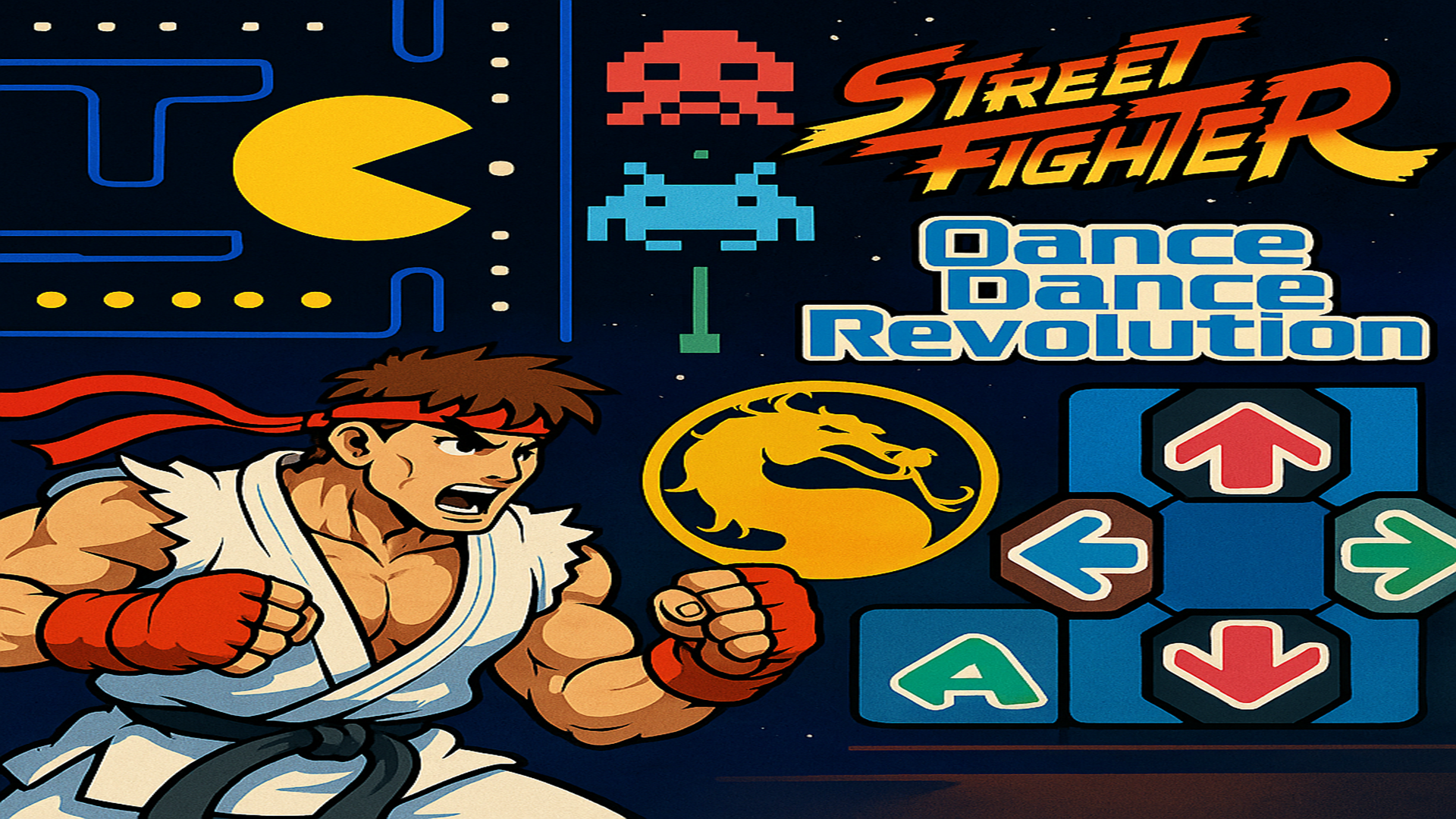Uncover the Arcade Legends That Changed Gaming Forever
Pixelated Legends
Gaming culture didn’t originate in your living room, and it didn’t even start with VR headsets or next-generation handheld consoles. Long before immersive graphics, online experiences, and the net, there were arcades—dimly lit rooms filled with the sounds of quarter-munching machines and the energy of gamers. These arcades are what created gaming’s first mass audiences.
But what games really defined the golden age of arcades? And how did they help mold the world of gaming that exists today? Take a step back with the following greatest arcade games and learn why they still continue to matter.

Pac-Man
When you think of arcade games, one name immediately comes to mind: Pac-Man. Released in 1980, this pellet-chomping icon wasn’t just a hit—it was a cultural phenomenon. Its gameplay was deceptively simple: guide a yellow circle through a maze while avoiding ghosts. But behind that simplicity was a game that sparked obsession across the globe.
Pac-Man pulled in a staggering $8.1 million per week in the U.S. during its peak. Over 100,000 arcade units were sold in just a year, raking in more than $1 billion in quarters. But it wasn’t just about profits. Pac-Man introduced one of the first competitive gaming scenes. Crowds gathered around cabinets to watch high-score battles, setting the stage for esports decades later.
Today, Pac-Man lives on as a pop culture icon—appearing in everything from cartoons to plush toys. But his true legacy? Proving that games could be addictive, accessible, and massively influential
Street Fighter II
If Pac-Man was about patience and patterns, Street Fighter II was pure adrenaline. Dropping into arcades in the early ’90s, it quickly became one of the most played arcade games by introducing fast-paced one-on-one combat and something new: direct, live competition. Beating the computer was fun. Beating your friend while a crowd watched? That was legendary.
With its global cast of fighters, iconic move sets, and the now-famous combo system (originally a glitch, believe it or not), Street Fighter II became the social game of its era. Players lined up to prove their skills. Trash talk flew. Rivalries were born.
And the fighting game genre was never the same again.
Space Invaders
Released in 1978, it helped lay the foundation for the entire arcade era. Rows of alien enemies slowly descended while players desperately defended Earth with pixelated laser blasts. It was tense. It was addictive. And it was everywhere.
The demand for the game was so intense that it reportedly caused a coin shortage. Globally, Space Invaders became one of the most played arcade games and profitable arcade games in history, with earnings estimated at $31 billion when adjusted for inflation.
Beyond the numbers, though, it influenced everything from tower defense to sci-fi shooters. You’ve felt its impact even if you’ve never played it.
Virtua Cop
By the mid-’90s, arcade shooters had evolved, and Virtua Cop was leading the charge. Known as Virtua Squad in North America, this Sega shooter broke new ground with its realistic 3D graphics and physical light gun controller.
Forget joysticks—Virtua Cop handed you a plastic pistol and let you take justice into your own hands. It was immersive, fast-paced, and laid the groundwork for future hits, such as Time Crisis and modern VR shooting games. In Japan, it was one of the top-selling cabinets of its time. In the U.S., players lined up for their shot at glory.
Mortal Kombat
Few arcade games stirred up controversy—and fans—like Mortal Kombat. With digitized graphics using real actors, bone-crushing fatalities, and buckets of pixelated blood, it shocked parents and thrilled players.
The backlash was intense. So much so, Mortal Kombat directly led to the creation of the ESRB rating system, a move that forever changed how games were categorized and sold. But controversy only fueled its popularity. Arcades were packed with players eager to test their might. Decades later, the franchise is still going strong—bloody, brutal, and unapologetically fun.
Dance Dance Revolution
Just when it seemed like arcades were fading, Dance Dance Revolution brought the crowd back. Debuting in the late ’90s, DDR turned players into dancers, blending rhythm, speed, and coordination in a totally new way.
With its colorful arrows and pulsing music, DDR wasn’t just a game—it was a performance. Crowds would form around the machines, cheering as dancers nailed complex sequences. In an era shifting toward home consoles, DDR reminded everyone that arcades still had something special: the energy of a live audience.

Can the Technology Somehow Impact the Most Played Arcade Games?
Absolutely! While gameplay was king, the technology behind each game made it unforgettable. Whether it was the maze logic of Pac-Man, the digitized gore of Mortal Kombat, or the lightning fast reactions using planning similar to roulette tactics you needed when playing Virtua Corp, the tech defined the experience.
And as new tech continues to emerge—VR, AR, haptic feedback—we can already see its fingerprints on modern successors. Many current games owe a creative debt to the classics, even if they look wildly different.


